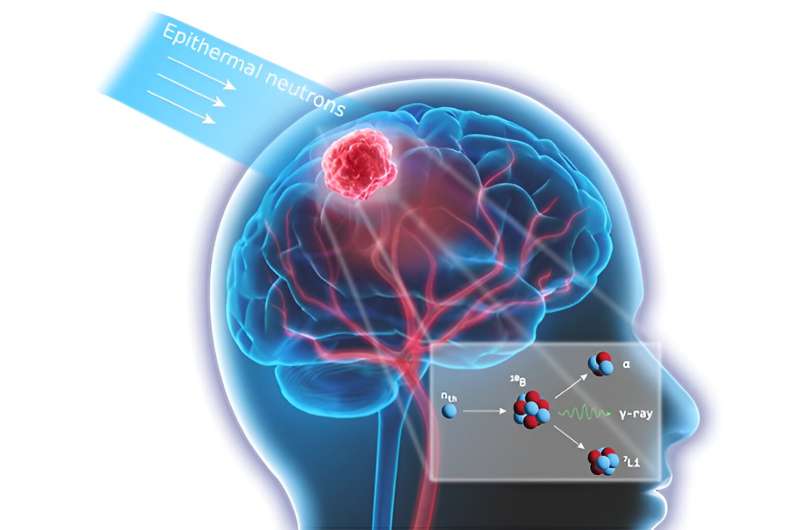This article has been reviewed according to Science X's editorial process and policies. Editors have highlighted the following attributes while ensuring the content's credibility:
fact-checked
trusted source
proofread
Real-time, cost-effective monitoring of neutron beams used in boron neutron capture therapy

Researchers from the Health Research and Technology Group at ANSTO and the University of Wollongong have developed a new device that could improve the quality control of accelerator-based boron neutron capture therapy, a promising radiation therapy for treating aggressive cancers.
The research, published in Radiation Measurements, reports the development of a novel metal-oxide-semiconductor field-effect transistor device with four transistors (Quad-MOSFET), designed for real-time, cost-effective monitoring of neutron beams used in boron neutron capture therapy.
Accelerator-based neutron sources are advanced alternatives to traditional nuclear reactors for producing neutrons. These involve linear accelerators, a technology that accelerates charged particles to high energies, producing neutrons when these particles collide with a target material.
Neutrons are then moderated or slowed down to the desired energy levels for various applications, including BNCT.
"Accelerator-based neutron sources are compact and cost-effective, bolstering access to neutrons for a variety of applications, including medical treatments like BNCT, or radionuclide production," said Assoc. Prof. Mitra Safavi-Naeini, ANSTO's lead researcher for this project.
Boron neutron capture therapy (BNCT) is a cutting-edge cancer treatment that targets cancer cells with high precision. It involves the use of boron-containing compounds that accumulate in cancer cells. When these cells are irradiated with neutrons, the boron atoms capture the neutrons and undergo nuclear reactions that destroy the cancer cells while sparing the surrounding healthy tissue.
"This device, with its real-time monitoring, cost-effectiveness, and compact design, has the potential to significantly improve the precision and safety of the therapy for cancer patients," said Klaudiusz Jakubowski, a joint ANSTO and UOW Ph.D. scholar and the lead author of the paper.
The device is capable of distinguishing between thermal, epithermal, and fast neutrons in the presence of a photon background, enabling the accurate real-time monitoring of neutron beams. The innovative design includes four MOSFET detectors, each optimized with different converter materials to selectively measure neutron flux across various energy spectra.
"Accelerator-based neutron sources have ushered in a new wave of facilities that are providing accelerator-based BNCT, making this promising cancer treatment more accessible," said Distinguished Professor Anatoly Rozenfeld, the corresponding author of the paper.
"The Center for Medical Radiation Physics has been at the forefront of developing innovative semiconductor radiation detectors for over three decades. Our partnership with ANSTO on this project exemplifies our commitment to advancing medical dosimetry and enhancing the precision of cancer treatment through cutting-edge technology."
The successful implementation of this quad-MOSFET device will pave the way for a new era in accelerator-based BNCT. With the ability to monitor neutron beams in real-time, clinicians can deliver more effective and safer cancer treatments.
The team is currently evaluating a prototype of this device at Australia's only thermal neutron source—DINGO thermal neutron imaging instrument at the Australian Center for Neutron Scattering—before moving on to trials at an overseas accelerator-based BNCT facility.
"This research is an example of ANSTO's commitment to advance the use of nuclear science and technology for the benefit of society," said A/Prof Safavi-Naeini.
More information: Klaudiusz Jakubowski et al, Computational design and evaluation of a quad-MOSFET device for quality control of therapeutic accelerator-based neutron beams, Radiation Measurements (2024). DOI: 10.1016/j.radmeas.2024.107253




















